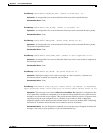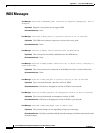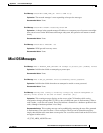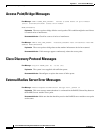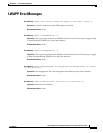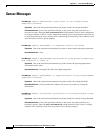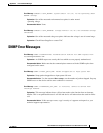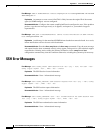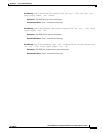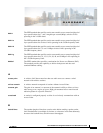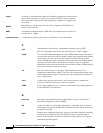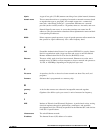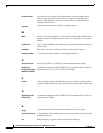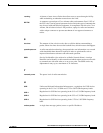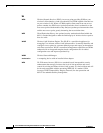
Glossary
GL-3
Cisco IOS Software Configuration Guide for Cisco Aironet Access Points
OL-30644-01
dipole
A type of low-gain (2.2-dBi) antenna consisting of two (often internal) elements.
domain name
The text name that refers to a grouping of networks or network resources based
on organization-type or geography; for example: name.com—commercial;
name.edu—educational; name.gov—government; ISPname.net—network
provider (such as an ISP); name.ar—Argentina; name.au—Australia; and so on.
DNS
Domain Name System server. A server that translates text names into IP
addresses. The server maintains a database of host alphanumeric names and their
corresponding IP addresses.
DSSS
Direct sequence spread spectrum. A type of spread spectrum radio transmission
that spreads its signal continuously over a wide frequency band.
E
EAP
Extensible Authentication Protocol. An optional IEEE 802.1x security feature
ideal for organizations with a large user base and access to an EAP-enabled
Remote Authentication Dial-In User Service (RADIUS) server.
Ethernet
The most widely used wired local area network. Ethernet uses carrier sense
multiple access (CSMA) to allow computers to share a network and operates at
10, 100, or 1000 Mbps, depending on the physical layer used.
F
file server
A repository for files so that a local area network can share files, mail, and
programs.
firmware
Software that is programmed on a memory chip.
G
gateway
A device that connects two otherwise incompatible networks together.
GHz
Gigahertz. One billion cycles per second. A unit of measure for frequency.
I
IEEE
Institute of Electrical and Electronic Engineers. A professional society serving
electrical engineers through its publications, conferences, and standards
development activities. The body responsible for the Ethernet 802.3 and wireless
LAN 802.11 specifications.
infrastructure
The wired Ethernet network.
IP address
The Internet Protocol (IP) address of a station.



